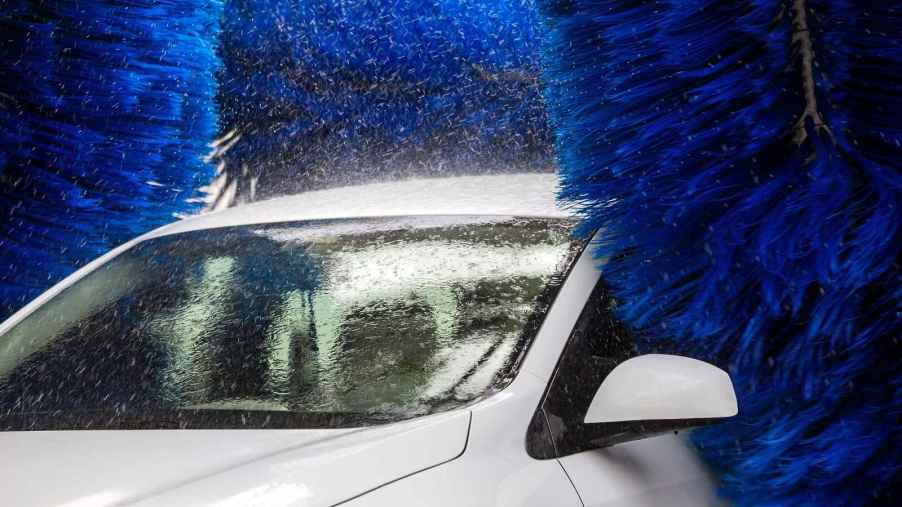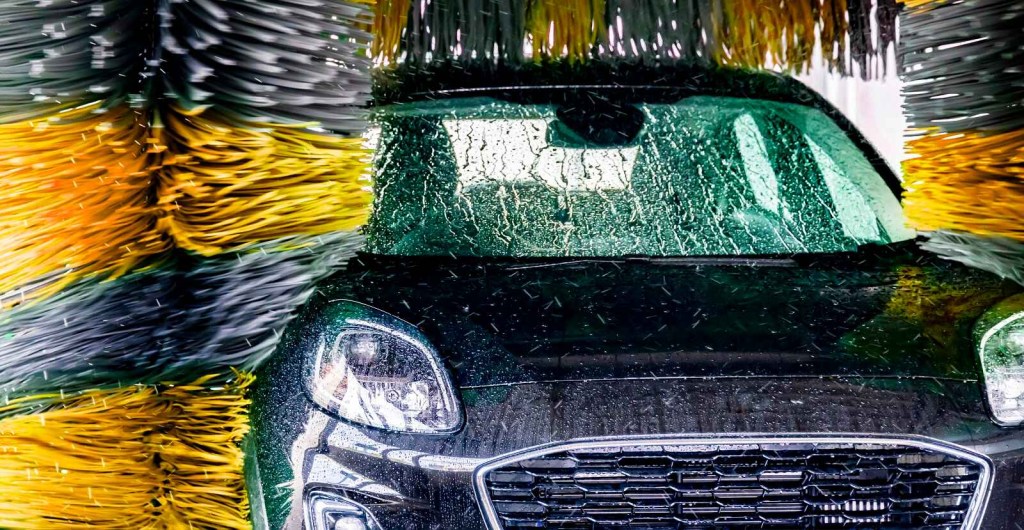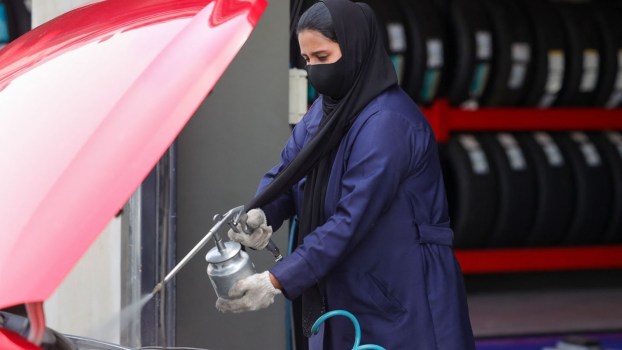
Do Touch Car Washes Harm Your Car’s Paint?
Car wash options abound in the United States. Every town worth its gridlock has a whole spread on offer, from quick runs through soap sprays and automatic scrubbers to expert hand-detailing, with prices to match.
When choosing between a slate of car wash options, many motorists refer to a classic bit of conventional wisdom: touchless is better than conventional. Old-school automatic washes are rumored to damage the finish, exacerbating dents and scratches and even speeding up rust. Touchless, so saith the rumor, is the only way to go.
Is the superiority of touchless wash fact or fantasy? Here’s the word on the difference between a touch and touchless wash.
What’s the difference between touch and touchless car washes?
The difference between a touch and touchless wash is straightforward enough. First, the terms obviously refer to different kinds of automatic washes. Barring telekinesis, washing a car by hand means touching it.
Touch washes run the car through power scrubbers, squeegees, etc. that clean the exterior directly. Touchless washes use high-power sprays and other innovations to get the vehicle clean without any car-on-brush contact.
As Car Wash Advisory reports, touch washing generally wins on price and convenience. They are cheap, automated, and widely available. Touch is also the gold standard for cleanliness. For a driver whose first concern is getting every last molecule of ick off their ride – for instance, where winter driving coats vehicles with corrosive salt – touch is the way to go.
Right now, motorheads the world over are, quite correctly, screaming a single word at this article: “swirl.” Touch washing leaves swirl patterns on a car’s paintwork, and while swirls aren’t “damage” in the sense of impacting a car’s function, many find them ugly and unwelcome. Touchless washes spare the swirl, swapping brushes for high-powered liquid jets. Touchless can be more expensive than touch, but it’s getting cheaper and easier to find.
Do touch car washes damage car exteriors?

The short answer on whether automatic touch washes damage cars is “yes.” The long answer is “yes” because automatic car washing always damages car finishes. Touch and touchless both hit paint hard with potent chemicals. Touch also risks scratches from the brushes themselves, not to mention the dreaded swirls, but the high-power sprays of alkaline soap and harsh cleaning solutions in touchless washes aren’t much easier on delicate paintwork.
As Auto Detail Doctor says, automatic washes are always a compromise: speed and convenience over keeping the paint pristine. Touch is a bit rougher than touchless, but both are fast, harsh ways to clean a car.
Other types and classifications of washes
For maximum paintwork protection, drivers have options beyond touch and touchless washing. First, the old-fashioned way: washing by hand with a sponge and soap guarantees a gentler touch. Motorists can do this themselves, either at home or in a car wash bay with equipment for rent, or pay an expert to do it for them. There’s also the new “soft touch” automatic wash, which Full Service Car Wash claims will get a vehicle as clean as a classic touch wash without scrapes, swirls, or the harsh chemicals of touchless washes.
Finally, there are vehicle options that reduce the necessity and impact of washing. Ceramic coatings resist scratches and make a vehicle easier to wash by hand. A coat of wax, which can be added by hand or at a wash bay, will also protect precious paintwork.




